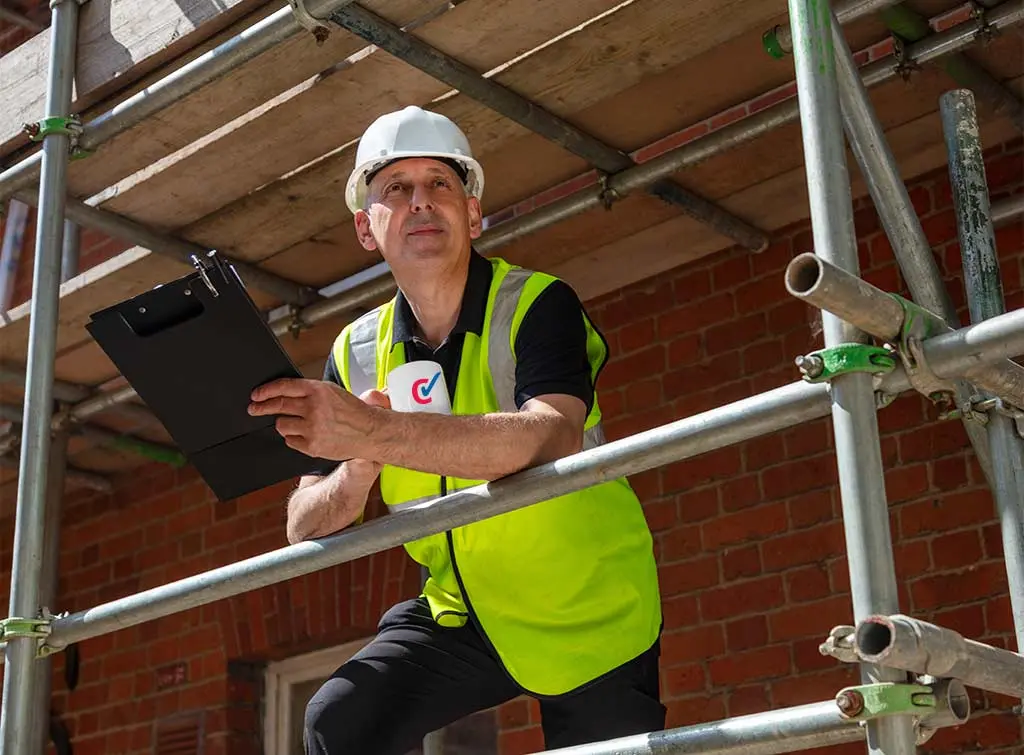Blog>Trade>Finance>Retirement planning for self-employed tradespeople
Last updated: 19 March 2024
Retirement planning for self-employed tradespeople
It’s never too early to start retirement planning for self-employed tradespeople. This article looks at self-employment retirement options and how to plan for them.

It’s very easy to put off retirement planning for self-employed tradespeople. After all, you’re probably too busy running your business to think about it. And anyway, retirement is for old folk, isn’t it?
But research shows not enough self-employed people have sufficient retirement plans in place. Less than one-third of self-employed people have a pension.
Why do you need to think about retirement now?
Putting thoughts of self-employed retirement options on the back burner could backfire as you grow older. The sooner you start thinking about how to start a retirement plan when self-employed the better.
It is never too early – or too late – to start planning for your retirement. It could help to put you in a better position financially when you decide to hang up your tools.
How to start a retirement plan for self-employed people involves making some key initial decisions. You then need to review these regularly throughout your career as your circumstances change.

Why retirement planning for the self-employed is important
People generally live longer these days. Many years ago, people didn’t live as long after they retired so having a retirement plan wasn’t as important as it is now.
Nowadays, with better health care and living standards, life expectancy is higher. If you retire in your 60s then you could have another 30-plus years to look forward to. That could mean you are retired for about one-third of your life.
For the self-employed, retirement planning is entirely your responsibility. Take pensions. Employers are required by law to set up a pension for employees and contribute to it. If you’re self-employed, no one is going to start a pension for you.
Retirement planning ideas for self-employed tradespeople
A retirement plan isn’t just about having a pension. Retirement planning for self-employed tradespeople might include:
Putting money into your pension
Investing spare money in other financial products
Saving where you can – every little helps
Earning money from your trade skills is one obvious area to support your retirement planning. You could earn as a tutor or consultant to other tradespeople who want to benefit from your experience.
Thinking about new sources of income after you retire. Age UK has some good ideas.
As you can see, there are many self-employed retirement options.

Retirement planning reviews
Retirement planning for self-employed tradespeople is likely to change over time. Retirement planning should adapt when your circumstances change. How often you review your plan depends on you, but at least once a year is a good idea.
In a retirement plan, you should think about:
How long do you want to work for?
Do you want to earn money from other sources after you retire and delay using your pension savings?
A retirement plan might cover a wide area of financial priorities:
Paying off your debt, especially a mortgage
Having money to enjoy what you want to do in retirement, like holidays
Making significant one-off purchases, like refurbishing your home or buying a new car
Looking after your long-term health and that of your family
Timing your retirement planning
Retirement planning for self-employed people usually starts by seeing when you can retire. The current State retirement age is 66 but this will increase to 67 between 2026 and 2028 and is intended to eventually rise to 68.
If you have a personal pension, you can start withdrawing money from it if you want to after the age of 55. This will rise to 57 in 2028.
As we’ve said, many people decide to carry on working after they ‘retire’. You can still have a pension and keep on working if you want.

Pensions as part of retirement planning
At the heart of retirement planning is probably going to be your pension. The more you put in for the longest period, the more you should get out at the end.
Every £1 you save for your retirement in your 20s has more than 40 years to grow. The longer you leave it, the less time you have to build up a retirement fund.
In retirement planning for the self-employed, here are some pension options:
State Pension
The amount of State Pension you receive depends on how much you have paid in National Insurance over your career. The maximum State Pension is currently £203.85 per week.
Personal pensions
You can put as much as you want into a personal or private pension. However, there is an annual allowance is £60,000 for the tax year 2023/24. Anything above this is taxable.
The government supports self-employed people by contributing to personal pensions. If you are a basic-rate taxpayer the government will top up your pension by the basic tax rate of 20%. If you put in £80 the government will top it up to £100.
For higher-rate taxpayers, the contribution is 40%. Every £60 is topped up to £100. For additional rate taxpayers, the amount is 45%. So, for every £55 you contribute, the government will add £45.
Probably the best way to increase your pension pot is with regular payments. You can also make lump sum contributions. This could suit self-employed tradespeople if their annual profit varies year by year.
When they retire, people usually swap their pension pot for something called an annuity. An annuity is a type of savings product that pays you a set amount (your pension) for the rest of your life.
SIPP
A self-invested personal pension (SIPP) is like a pension but you have more control over what it invests in to grow your pension pot. You probably need to discuss a SIPP with a professional before deciding to start one. This could be with your bank or a local law firm.
NEST
A National Employment Savings Trust (NEST) is a government saving scheme aimed a self-employed people and also sole directors of companies that don’t employ anyone else.
Key takeaways
Retirement planning for self-employed tradespeople can never start too early
Retirement planning for self-employed tradespeople includes different types of saving
Regular reviews of retirement plans keep them up to date with your changing needs
Retirement planning is based on the date you expect to stop working, although you might choose to find new ways to earn extra income after you retire
Pensions form the main part of most people’s retirement planning
Ready to take your business to the next level?
We can help you get there
DISCLAIMER
This is information – not financial advice or recommendation. The content and materials featured or linked to on this blog are for your information and education only and are not intended to address your particular personal requirements. The information does not constitute financial advice or recommendation and should not be considered as such. Checkatrade website is not regulated by the Financial Conduct Authority (FCA), its authors are not financial advisors, and it is therefore not authorised to offer financial advice.
Always do your own research and seek independent financial advice when required. Any arrangement made between you and any third party named or linked to from the site is at your sole risk and responsibility. Checkatrade blog and its associated writers assume no liability for your actions.


